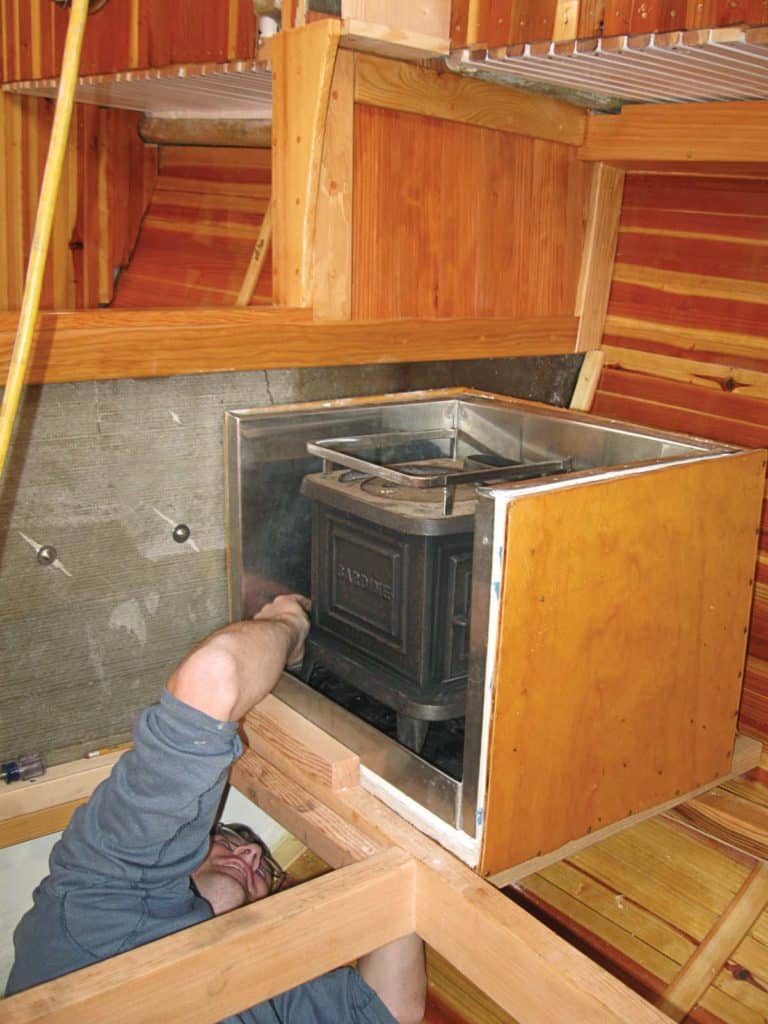In one way or another, my wife, Danielle, and I had spent the last 10 years in preparation for a cruise to northern East Coast waters. When designing Ganymede in our heads while we shopped around for a bare sailboat hull, we had kept chilly Newfoundland and the Canadian Maritimes in mind, and when her construction finally began in 2006, we had insulated the hull and cabin against condensation. A short cruise to Maine four years before in Capella, our old Irwin 27, had revealed the importance of that and several other necessities that we incorporated into Ganymede‘s design: a wood-burning stove, for keeping things dry as much as for heat; a cabin sole that wouldn’t puddle water; and a big locker forward, sealed from the cabin by a collision bulkhead, to stow smelly, wet anchor chain, ropes and damp sails.
Our voyage too had been in the general direction of the North Atlantic. One of the reasons we made for the Panama Canal from San Francisco had been to access the wonderful Caribbean and East Coast cruising grounds, but further back in our heads had been the promise of vast, uncrowded waters in Nova Scotia and beyond. It had been where we next wanted to take Capella before we discovered that Danielle was expecting, even though we knew Capella was not the boat for such a cruise.
This past winter, spent in brisk and snowy Newport, Rhode Island, aboard Ganymede, and now with three girls, had also been strategic. Though we could have sailed south to pleasanter climes, we chose instead to live aboard there, not only to acclimatize our bodies to cooler weather, but to be close to our desired cruising grounds when spring arrived, and thus able to leave at the earliest moment that weather would allow.
Of course, there was more equipment Ganymede could have used when we first sailed from California on our 7,500-mile shakedown to Rhode Island; by the time we reached New England, we had a good notion of what was needed. The first was a good working jib, to balance the mainsail in full-hoist mode and allow us to carry it that way for longer periods. It would have been nice to have had the sail all along, of course, but money was tight when we first set out, so we carried on with a pair of headsails — one too large and the other barely big enough for nose blowing. Next item was a better storm trysail. We had one, of sorts — an old trawler steadying sail that served pretty well in big winds, but was too small for anything less than a full gale. A local Newport sailmaker, Jasper and Bailey, made us a new jib and storm sail, and though the investment was significant, they have proved well worthwhile.
Another item of desire was a self-steering windvane. While Danielle and I have hand-steered for 11 days nonstop, watch in and watch out — it’s not as bad as people might think — doing so while having three children to care for becomes more of a burden. The off-watch crew needs sleep, and a boatload of restless, bored children is not conducive to blissful slumber. So we bought a used Sailomat 601 and are still fiddling with the device (it would’ve been helpful if the manual still existed), but slowly the bugs, admittedly caused largely by my homemade installation bracket, are getting worked out. So we have high hopes. Not so high, however, that I don’t also have a good supply of shock cord with which to experiment with sheet-to-tiller steering, which will also serve as a redundant system if the windvane should fail.
Along the lines of redundancy, our preparations involved procuring a third handheld GPS unit, so we now have one for everyday use, one for a backup, and the third — waterproof and with a tiny plotting screen — for the ditch kit. It’s nice to fondly think of using only the sextant for offshore work, but the realities of fog, currents and ironbound shores, and the possible need to relay an exact position, make an occasional GPS fix a matter of prudence. Still, the sextant is ready to hand, and we bought a current Nautical Almanac and the two volumes of the HO 229 Sight Reduction Tables for northern waters that our collection was missing.
The biggest change for us in northern cruising is the amount of clothes required. All our previous seafaring was accomplished with the cheapest of bibs, yellow PVC jackets and uninsulated rain hats. In most places we’ve sailed, swim trunks and rain hats were the most foulies required; the jacket only came out in exceptional circumstances. As for our vinyl hardware-store boots: They spent four years jumbled in the bottom of the sail locker, neither seen nor thought of, and still almost new when we upgraded to insulated sea boots, comfortable enough to wear all day and sometimes to sleep in. This is an important detail, since while cruising from Newport northward we’ve had to do it numerous times.
To go with them we bought proper bibs, which must also be sleep-worthy and have room enough to wear a thick sweater underneath. Danielle kept her old jacket, while I got a new one — still PVC, but roomier and with neoprene cuffs to keep water from trickling down the sleeves. Lastly, we invested in sou’westers, real ones, which shed water down the back, feature insulated ear flaps, and best of all, allow a full range of vision, which the clumsy, stiff PVC hoods do not. Those we always cut off first thing, being careful to leave a nice high collar.
During Ganymede‘s construction, I had built a big opening over the saloon for a skylight. It had become, for economy’s sake, just a hatch with a plain lid that stayed mostly tied open in the torrid climates we were cruising. This let in light as well as air, but things became gloomy down below when it was closed for rain. One of my winter projects was to make a new hatch lid with a 2-foot-square pane of glass that lets in plenty of light when closed, which is how it now remains. The opaque fore-hatch lid also got a new window, and the difference in ambient light is astonishing. Once under way, in the long days of the northern summer, when the oil lamps were lit at all it was more to dispel the damp than to see by, since we went to bed before it was fully dark.
Whenever I had a spare moment, in harbors ever farther along, I would take care of some small detail or another: checking the parachute sea anchor, making sure the bridle had a fair lead, readying an attachment point for a stern warp. The idea was to have all our heavy-weather procedures fresh in our minds, and all the necessary gear ready to go. If we could avoid having to look for an extra shackle in the middle of a stormy night or wondering on which side of a stanchion to lead a warp, it would be time well spent. Of course, frequent inspections aloft against chafe, wear, loose shackles and the like are prudent regardless of sailing plans, but extra important when sailing in potentially problematic waters.
Each of these things — some pretty minor, others of vast importance, together add up to answer the big question: Are we ready for everything? In one respect we’re never ready; however prepared one may be, the knowledge that the sea is still vast and fuller of potential surprises than anyone can plan for is sobering, and preparing for every imaginable scenario is impossible. In the end, prudence and good seamanship are far more valuable than any amount of gear. Whether we have those in adequate supply is something that time alone will tell.
This article first appeared in the April 2014 issue of Cruising World. After their winter of preparation, the Zartmans sailed north, counterclockwise around Newfoundland, up the St. Lawrence, south across Lake Champlain and eventually to New York and back to Newport, where they’re living aboard Ganymede this winter.
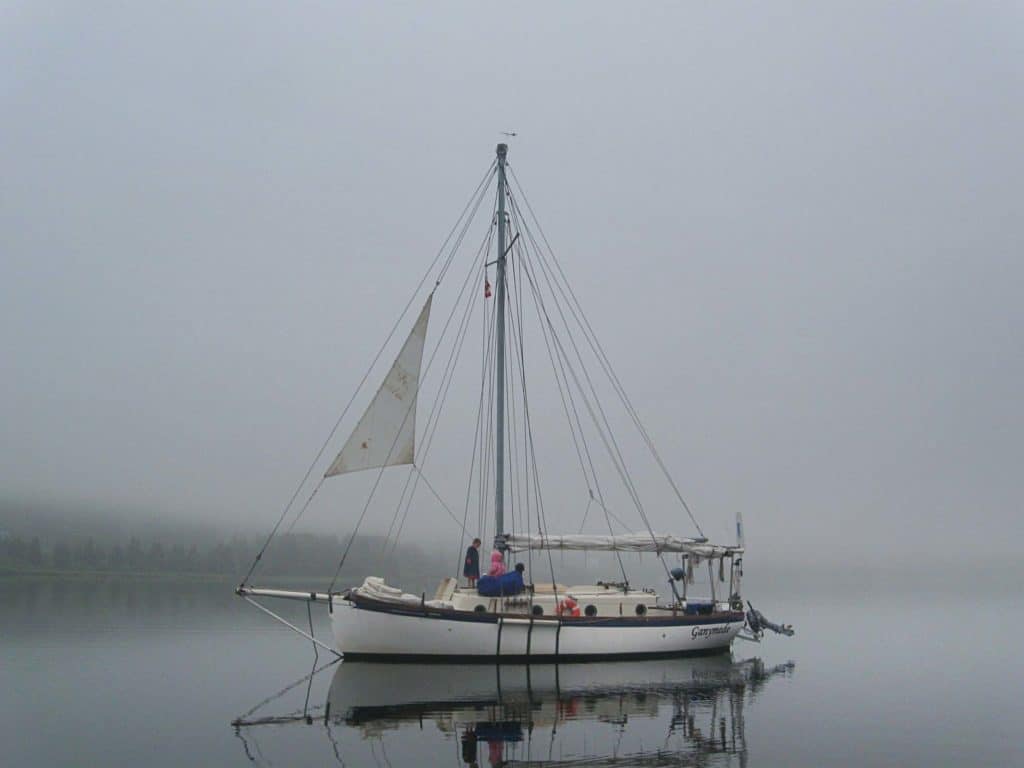
Storm Jib
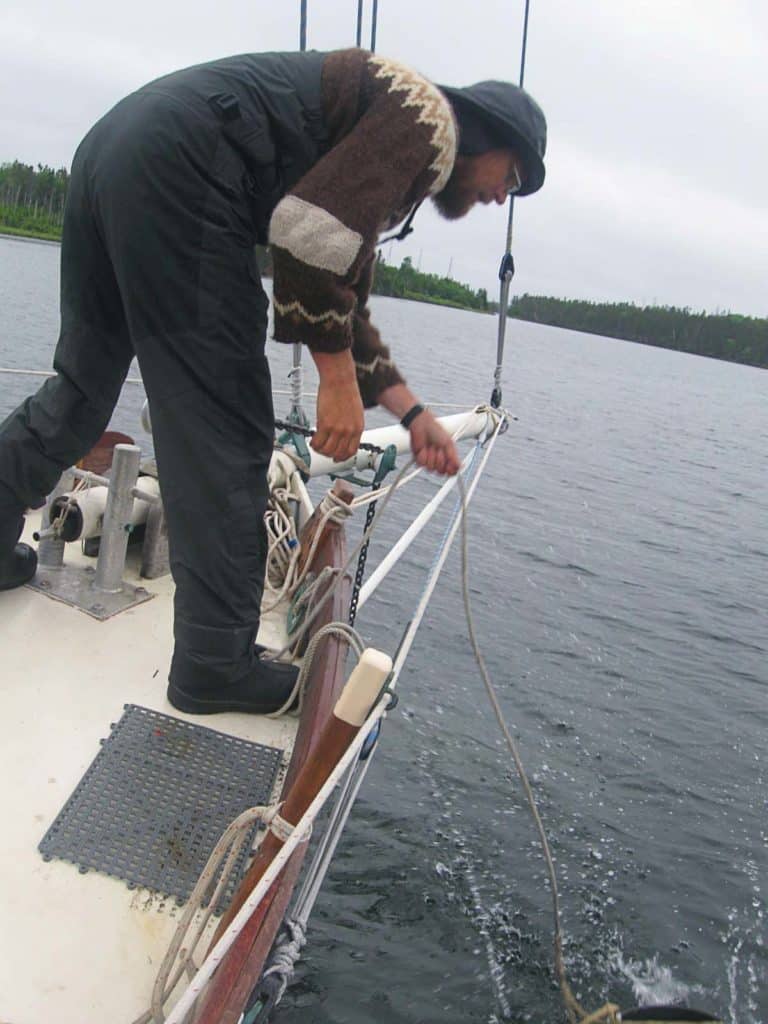
Sou’Wester and Bibs
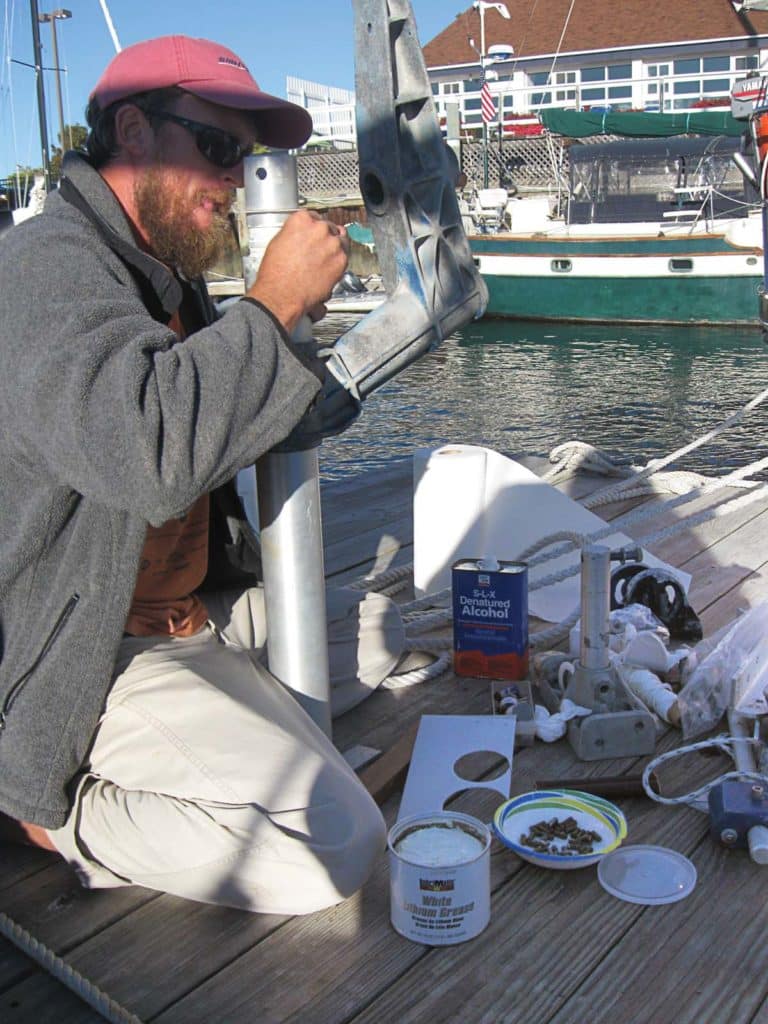
self-steering vane
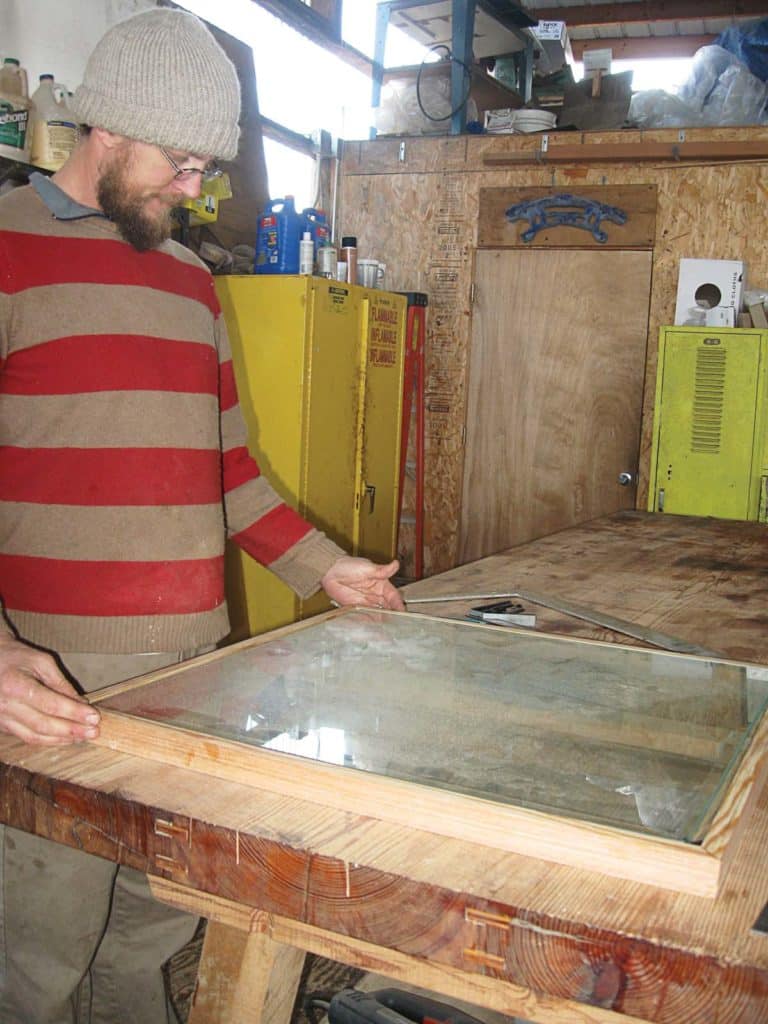
Making a skylight
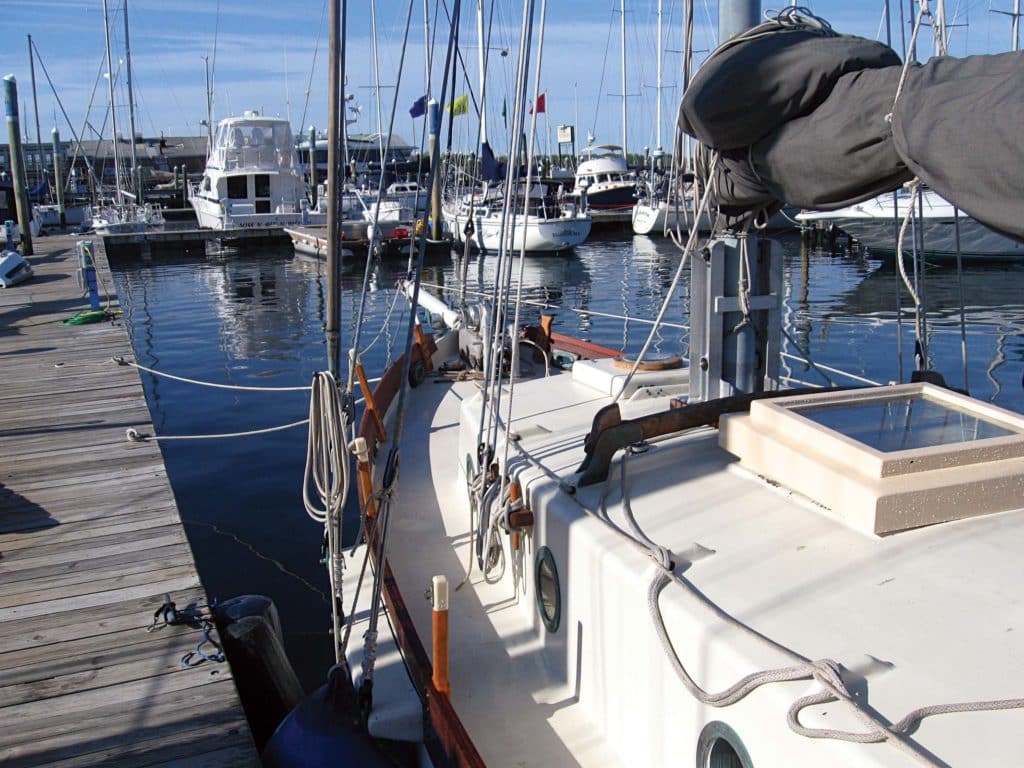
New hatches
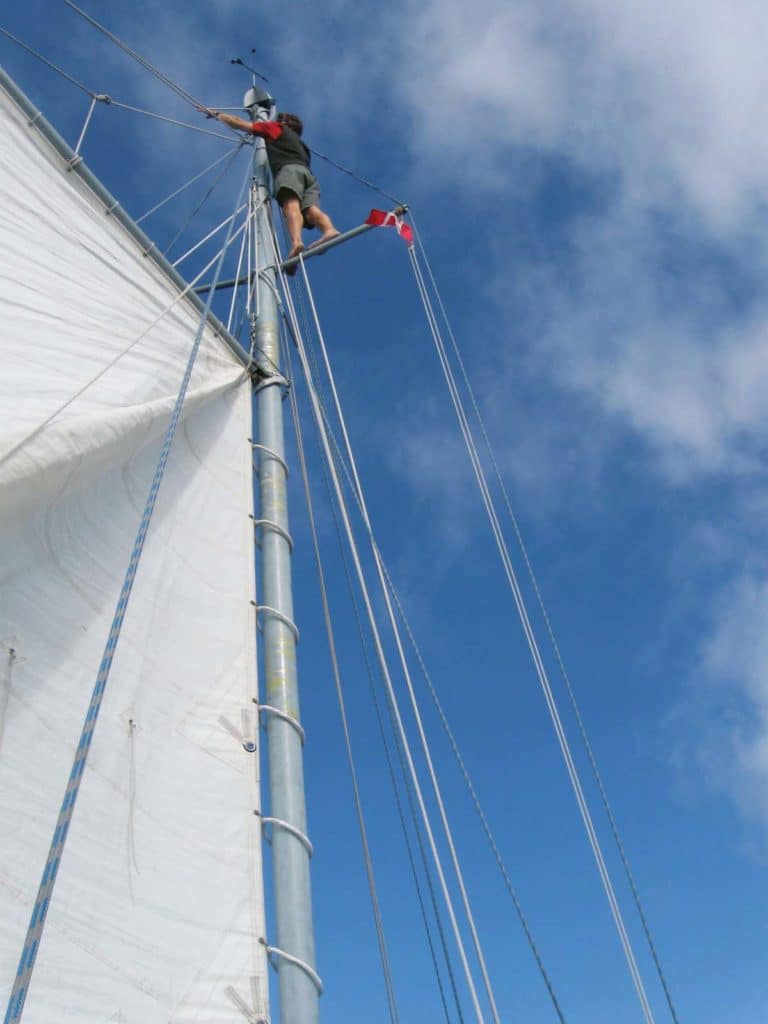
Rig Inspection
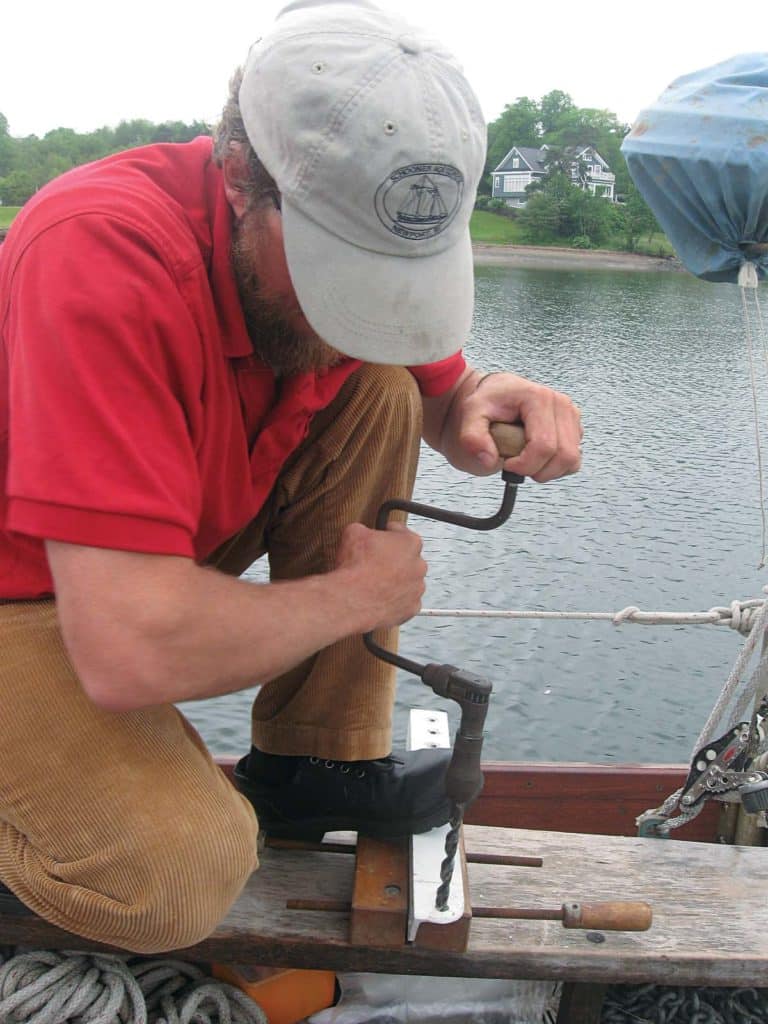
Hand tools
